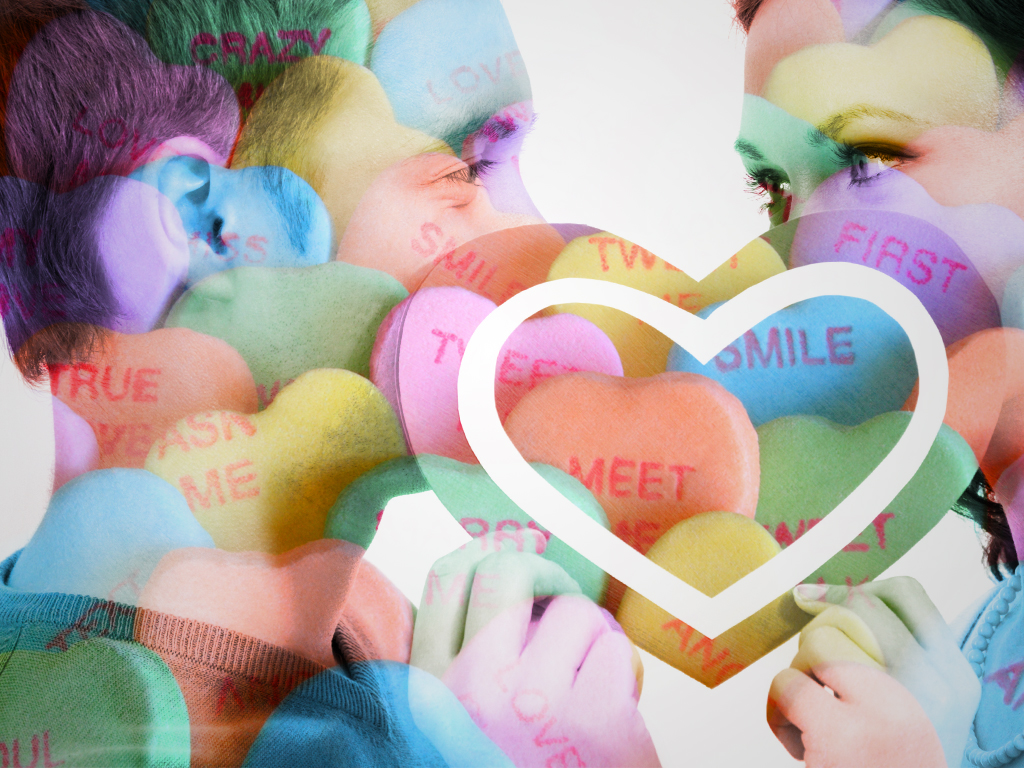While professional marketers at 27 brands are focused like a laser beam on Super Bowl 50 — which will be held on Sunday, February 7 — their peers at hundreds of other brands, along with thousands of retailers, are focused on the following Sunday, February 14, which is Valentine’s Day. Why? Because millions of their customers will spend an estimated $18.9 billion on Valentine’s Day gifts. And that’s billion with a “B”. This makes the so-called “Big Game” look like “Small Potatoes” by comparison.
Let’s take a closer look at consumers and the digital media they use leading up to the purchases they’ll make to celebrate a day that’s been associated with romantic love since the High Middle Ages, when the tradition of courtly love first flourished.
Valentine’s Day Gift-Giving: A Brief Throwback To 2005
In 2005, I helped Verizon SuperPages.com optimize a press release that announced the results of a national survey of 1,000 consumers that was conducted around this time of year. According to the survey, men and women didn’t always agree when it came to Valentine’s Day gifts and how much love costs. While 50 percent of men thought they needed to spend more than $50 to show their love for their sweetheart on Valentine’s Day, three-quarters of women planned to spend less than that amount on gifts. For most women back then, what counted was the thought behind the Valentine’s Day gift, not the price tag. Seventy-five percent of females said they expected their significant other to spend less than $50, and only 5 percent expected a gift worth $100 or more. The survey also found that men were much more likely to send flowers, with 30 percent planning to send flowers to their sweetheart versus only 4 percent of women. More than half of women preferred to receive flowers at home on Valentine’s Day, while 24 percent wanted them delivered to their workplace, and 20 percent would have taken them in either location. When planning a romantic dining experience, Italian food and a home-cooked meal were the clear winners for both men and women. Thirty-two percent of respondents considered Italian food to be the most romantic meal for Valentine’s Day, and 20 percent thought cooking dinner at home was the ideal date. Eleven percent preferred a steakhouse, 8 percent would pick French food, and 7 percent thought seafood was the most romantic choice. Jaye Hersh, a celebrity shopper and founder of the trendy Los Angeles boutique Intuition, said at the time, “This year, it’s the smaller, more personalized Valentine’s Day gifts that are hot, and you don’t have to spend a lot of money to say ‘I love you.’” Among the less expensive romantic gift ideas she shared were personalized his and hers robes and pajamas, pomegranate candles, and monogrammed dress shirts. More gift recommendations from Hersh were featured on SuperPages.com, which billed itself in the optimized press release as “the most comprehensive shopping destination where consumers can compare prices, purchase or bid on almost any gift for their loved ones.” Why deviate from the standard corporate boilerplate? Because this seasonal campaign was designed to drive traffic to the website for a specific holiday. It’s worth noting that this campaign not only increased traffic to SuperPages.com, it also dramatically increased the searches for “florists” on the website beyond the normal increase that was expected for this seasonal term. In fact, there had been 342,478 searches for “florists” on the site from February 6 to 14 in 2004. But, there were 1,841,272 searches for “florists” on SuperPages.com from February 6 to 14 in 2005. That was an increase of 438 percent.
Valentine’s Gift-Giving: Now
Well, that was then and this is now. Verizon spun off its SuperPages unit as a separate company in 2006 and it merged with another company in 2013, creating Dex Media. This explains why SuperPages no longer has campaigns that promote survey results to drive traffic to its website. However, other organizations have conducted surveys around Valentine’s Day. So, professional marketers can discover just how much couples plan to spend a decade later and if the cost of playing Cupid still varies by gender. For example, the National Retail Federation (NRF) conducted a Valentine’s Day Consumer Spending Survey last year and found that the average person celebrating Valentine’s Day would spend $142.31 on candy, flowers, apparel, and more, up from $133.91 the previous year. Total spending in 2015 was expected to reach $18.9 billion, a survey high. While 53.2 percent of the 6,375 consumers surveyed planned to buy candy for the holiday, spending a total of $1.7 billion, 21.1 percent planned to buy jewelry for a total of $4.8 billion, the highest amount seen since NRF began tracking spending on Valentine’s gifts in 2010. In addition, 37.8 percent planned to buy flowers, spending a total of $2.1 billion, and 35.1 percent had plans for a special night out, including movies and restaurants, totaling $3.6 billion. Celebrants also planned to spend nearly $2 billion on clothing and $1.5 billion on gift cards. The NRF survey found 91 percent planned to treat their significant others/spouses to something special for the consumer holiday, with plans to spend an average of $87.94 on them, up from $78.09 the previous year. In addition, 58.7 percent planned to spend an average of $26.26 on other family members and $6.30 on children’s classmates/teachers. It seems women were in for the biggest treat on Valentine’s Day. Men planned to spend $190.53 on average, nearly double what women planned to spend – which was $96.58 on average. In addition, adults between the ages of 25 to 34 planned to outspend other age groups at an average of $213.04: 35-to-44-year-olds planned to spend an average of $176.21, while 18-to-24-year-olds planned to spend an average of $168.95. But wait, there’s more! A record 21.2 percent said they planned to include Fluffy and Fido in their Valentine’s Day plans, looking to spend a mere $5.28 on average – which equates to a whopping $703 million on pint-sized gifts of all varieties. According to the NRF survey, discount (35.2 percent) and department stores (36.5 percent) were among the most visited locations for those looking for the perfect Valentine’s Day gift, as were specialty stores (19.4 percent) and florists (18.7 percent). In addition, 25.1 percent said they would shop online and 13.3 percent would shop at a local or small business to find something unique for their loved one. Other research by Google has looked at how lovebirds keep the spark alive with romantic gestures and gifts on Valentine’s Day. For example, there were three times as many searches for “gifts for boyfriend” than “gifts for girlfriend” last February.
And the day before Valentine’s Day, gift givers search on mobile more than on desktop and in the weeks leading up, it’s neck and neck.
Valentine’s Day Gifts 2016: Marketing Insights
So, what should professional marketers who want to be visible and persuasive in the moments that really matter do with these trends and findings about Valentine’s Day gift-giving?
1. Put Data-Driven Insights At The Heart Of Your Brief
The best ads hit us on an emotional level. By understanding how people find and fall in love, brands can uncover fundamental human truths and develop creative and messaging that truly resonate. See what insights you can find in Google Trends data that can fuel your creative brief and executions.
2. Make A Love Connection Through Mobile, Search, Video
Love changes our daily habits and behaviors, and not just on Valentine’s Day. There’s a huge opportunity to engage with people during these life moments — from a first kiss to a wedding — all year round. These moments happen on search, mobile and YouTube; are you there? Are your campaign windows wide enough to capture interest beyond the holiday?
3. Be There When They Need You Most
When it comes to love and marketing, timing is everything. Consumers are now constantly connected, seeking answers, and making decisions immediately. Marketers need to be there in the moment with timely, relevant content and experiences.


